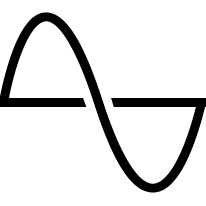
Some tenses or uses of tenses are not so simple. A present or past perfect, for example, seems to involve two tenses, (i) a present or past and (ii) a past.
On the other hand, a simple past in a language like Russian can receive a relative interpretation, as if it were complex.
A reminiscent contrast is observed in subordinate clauses, between Sequence-of-tense and Non-Sequence-of-Tense.
Standard ways to model these phenomena include shifting the utterance time and assuming that tenses under tenses can be uninterpretable.
While a language like English only has non-finite (participial) relative tenses, a language like Russian has finite (or covert) relative tenses. And while a language like English has tense concord, a language like Russian does not. And these two pairs of facts are connected.
Relative tense
Consider the following Russian sentence, which is ambiguous (from Grønn 2004: 181):
(1) Kogda ja vernulas’, bandity ubili Vanju. // when I returnedpf bandits killedpf Vanju (1) 'When I returned, the gangsters (had) killed Vanja.'
One way to resolve this is to say that the form ubili is either an absolute or a relative past. Let us assume a simple definition of absolute past, PT0, and add a definition of relative past, PT1:
(2) [[PT0]]t0,t1 = λT(it) a t < t0 is a T
(3) [[PT1]]t0,t1 = λT(it) a t < t1 is a T
Here both t0 and t1 basically represent the time of utterance, but while t0 is unshiftable, t1 can be shifted from t0 to another time by a temporal clause like kogda ja vernulas’ 'when I returned' or another time adverbial. When the tense is relative, this time 'acts as' the time of utterance. The time relative to which the past is past is shifted – here backwards.
The when clause will compose semantically with the TP by Intensional Functional Application, the 3rd composition principle: [[ when I returned ]]t0,t1 will not apply to the extension [[ PT1 [AspP the gangsters kill Vanja] ]]t0,t1 but to the intension [[ PT1 [AspP the gangsters kill Vanja] ]]t0, which is:
λt1 a t < t1 includes an event of the gangsters killing Vanja.
Definitions like (2) and (3) would both be relevant for the past perfect in a language like English. Consider (4):
(4) When I returned, the gangsters had killed Vanja.
One would say that there are two past tenses in the main clause, a relative past marked by the past participle form and an absolute past marked by the finite past form. The output from the former is to serve as input for the latter, mediated by an adverbial like the when clause.
But for modeling embedded relative tenses, we may need something slightly different …
Embedded tense
In cases like the Russian sentence (5), the time relative to which the embedded past is past seems to coincide with the time of the event described in the matrix:
(5) Ona sprosila, spal li on. / she askedpf sleptipf whether he
(6) ‘She asked if he had been sleeping.’
This can be modeled by letting the relative tense depend on a temporal pro-form, tn say, a variable controlled or bound by the matrix tense, as a sister to the relative tense in LF.
(6) [[PT2]]t0,t1 = λt(i)λT(it) a T < t
There is a corresponding relative future tense too.
See Grønn (2015) and Grønn and von Stechow (2016) for a way to unify absolute tenses and different uses of relative tenses in a general framework.
Now what about the use of the past perfect in a sentence like (7):
(7) She asked if he had been sleeping.
It is customary to regard the finite past in such complement clauses as a pure concord thing, an uninterpretable zero tense, in a more general picture of SOT (see, e.g., Grønn and von Stechow 2010). Then the non-finite, relative past is all there is to be interpreted in the complement clause in (7), and the definition (6) can be used here too.
The zero tense can be the only tense:
(8) She told me she was pregnant.
To express this content, Russian must use a (relative) present in the complement clause.
An alternative would be to treat the past tense not as a zero tense but as an absolute past. Clear counterevidence to that is provided by these Norwegian examples:
(9) a. og jeg som hadde håpet at du var gravid nå
(9) b. Scooter ringte og spurte om du kom i studio i morgen
(9) c. Han ba meg sørge for at du kom i kveld
The systematic differences between an SOT language like English and a non-SOT language like Russian can be summed up thus: English has zero tense but lacks finite relative tense, Russian lacks zero tense but has finite relative tense.
Present perfect versus simple past
There is a division of labor between the simple past and the present perfect in a language like English regarding the position of the time preceding the time of utterance: the former requires it to be restricted to a frame with a right bound, while the latter rejects such a restriction.
(10) ??Bohr has met Einstein in Berlin in 1920.
This constraint is known as the present perfect puzzle. Various ways to account for it have been proposed; see Grønn and von Stechow (t.a.).
Here we may just note, first, that the present perfect can be analyzed as an absolute present over a relative past, and that an absolute past tends to be definite (one uniquely familiar past time) while a relative past tends to be indefinite (some past time); second, that there seems to be a relevant element of competition between the simple past and the present perfect, absent when it comes to the past perfect, which is compatible with a definite relative past time:
(11) Bohr had first met Einstein in Berlin in 1920.
